
The odds are that if you yourself haven’t been diagnosed, you know someone who’s been diagnosed with a neurodivergence. The term, along with neurodiversity, was coined by an autistic sociologist named Judy Singer to describe people with autism spectrum disorder (ASD) in a way that didn’t focus on the perceived negative aspects of autism. The term now most commonly refers to people with autism and attention deficit hyperactivity disorder (ADHD) but can also include people with dyslexia, dyspraxia, dyscalculia, obsessive-compulsive disorder (ODC), and Tourette syndrome.
Autism is a developmental disorder that affects a person’s ability to communicate and process sensory information. Autistic people can have a hard time understanding sarcasm, social cues, facial expressions, and tone of voice. They can become easily overstimulated during periods of stress or when exposed to loud noises, bright lights, or unpleasant textures. However, they can also become understimulated more easily than someone who is not neurodivergent. Autistic people tend to excel at pattern recognition and organization, and it’s common for them to develop special interests or specific subjects they are passionate about to an extreme degree.
April is National Autism Acceptance Month, a campaign started to encourage non-autistic people to accept autism as a normal human experience. The month is meant to discourage the idea that autism is something that needs to be cured, fixed, or prevented. The best way to show support is through personal education. If you or someone you know has autism, or if you would just like to learn more about it, the library offers both nonfiction resources as well as fiction featuring characters with autism.
If you or someone you know has ADHD and/or autism, or if you would just like to learn more about neurodivergencies, the library offers both nonfiction resources as well as fiction featuring characters with autism and ADHD.
Non-Fiction
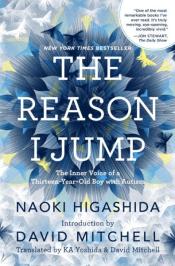
The Reason I Jump: The Inner Voice of a Thirteen-Year-Old Boy with Autism by Naoki Higashida
Written by Naoki Higashida, a very smart, very self-aware, and very charming thirteen-year-old boy with autism, it is a one-of-a-kind memoir that demonstrates how an autistic mind thinks, feels, perceives, and responds in ways few of us can imagine. Parents and family members who never thought they could get inside the head of their autistic loved one, at last, have a way to break through to the curious, subtle, and complex life within.
Using an alphabet grid to painstakingly construct words, sentences, and thoughts that he is unable to speak out loud, Naoki answers even the most delicate questions that people want to know. Questions such as: “Why do people with autism talk so loudly and weirdly?” “Why do you line up your toy cars and blocks?” “Why don’t you make eye contact when you’re talking?” and “What’s the reason you jump?” (Naoki’s answer: “When I’m jumping, it’s as if my feelings are going upward to the sky.”) With disarming honesty and a generous heart, Naoki shares his unique point of view on not only autism but life itself. His insights—into the mystery of words, the wonders of laughter, and the elusiveness of memory—are so startling, so strange, and so powerful that you will never look at the world the same way again.
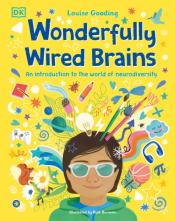
Wonderfully Wired Brains by Louise Gooding
An informative and inclusive children’s guide to neurodiversity for those not in the know and to inspire children who are neurodivergent.
Our brains are unique in the way they function, work, and think. Neurodiversity is still a relatively ’new’ concept that can be tricky to understand, but this book is here to help! This inspirational book written by neurodiverse author Louise Gooding challenges misconceptions and shows how neurodivergent brains work a little differently.
It is common for neurodiverse people and those with neurological differences to feel as though they don’t fit in, but their extraordinary differences should be embraced. Wonderfully Wired Brains teaches children aged 7-9 all about the awesome abilities that neurodiverse individuals have, introduces them to advocates who are challenging neurodiversity stereotypes, and most importantly gives them a safe space to feel accepted.
This informative and educational book for children features:
- Accurate, understandable explanations of diagnoses that impact the brain, including each area of neurodiversity and what it can or does mean for anyone with that particular neurological difference.
- A positive, friendly look at neurodiverse brains that debunks myths and stereotypes.
- Informative, inclusive text is accompanied by colorful, modern illustrations.
- The font and colors used have been selected to accommodate a range of neurodiverse readers.
Combining neurodiverse experiences with science, history, and brain-bursting facts, Wonderfully Wired Brains has something for everyone! Whether your child is neurodiverse or not, this book will inspire inquisitive young readers and show them that no two brains function in the same way and that everyone’s differences should be celebrated. There really is no other book like it.
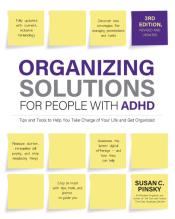
Organizing Solutions for People with ADHD: Tips and Tools to Help You Take Charge of Your Life and Get Organized by Susan C. Pinsky
Organizing Solutions for People with ADHD, 3rd Edition offers cutting-edge strategies for anyone who wants to improve their physical space, time management, and peace of mind.
This revised and updated version also includes helpful assessments of the latest digital tools for organization and new research on the ADHD brain.
About 4.4% of the adult population—over 13 million Americans—have Attention Deficit Hyperactivity Disorder (ADHD.) Yet four out of every five are not even aware of it, and how it can affect their professional and personal lives if not managed well. Written by professional organizer Susan Pinsky, Organizing Solutions for People with ADHD, 3rd Edition outlines a practical life management approach that emphasizes easy maintenance techniques and maximum efficiency, catering to the specific needs of the ADHD population.
Divided into two easy-to-read sections, the first covering this life-changing new method and the second showing how to implement it in each part of the home, Susan’s practical solutions address the most common organizing dilemmas among her ADHD clientele, while also drawing on her own personal experience as the mother of a child with ADHD.
The projects section, organized by the type of room or task, consists of practical organizing solutions for people living with ADHD:
- At work: prioritizing, time management, and organizing documents
- At home: paying bills on time, decluttering your house, scheduling and keeping appointments
- With kids: driving them to various activities, grocery shopping and meals, laundry, babysitters, organizing drawers and closets
- At leisure: organizing time for your social life, gym, and various other hobbies and activities
Color photographs are featured throughout, as well as sidebars and testimonials from adults with ADHD, providing numerous organizational tips, such as the importance of dividing time into minutes or moments, task completion, how to avoid procrastination, asking for help, and minimizing unnecessary stuff.
Get your life in order with this witty and sympathetic guide to organization.
Fiction

A Day With No Words by Tiffany Hammond
A must-read that belongs in every home and classroom, A Day With No Words invites readers into the life of an Autism Family who communicates just as the child does, without spoken language.
This colorful and engaging picture book for young readers shares what life can look like for families who use nonverbal communication, utilizing tools to embrace their unique method of "speaking."
The story highlights the bond between mother and child and follows them on a day where they use a tablet to communicate with others.
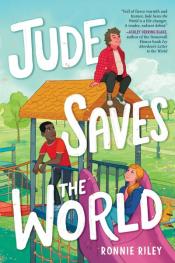
Jude Saves the World by Ronnie Riley
Twelve-year-old Jude struggles with some things: focusing at school, feeling like everything rests on their shoulders, not being able to come out as nonbinary to their old-fashioned grandparents. But Jude doesn't struggle with Dallas, their best friend in the whole world. Their person.
Jude and Dallas's world changes when they learn Stevie, a girl in their class, has been ousted from the popular clique at school. Worried it had something to do with Stevie's rumored crush on another girl, Jude reaches out to see if Stevie is okay. Stevie quickly becomes an important friend to Jude and Dallas, whose unwavering acceptance of her is a stark contrast to the tests and dysfunction she experienced with her former friend group.
As their friendship deepens and the three open up to each other, Stevie's unconditional and open acceptance when Jude comes out to her motivates them to create a queer safe space in their community. Jude has the courage and determination it takes to create the first Diversity Club in their community, but will they be able to find the support they need to make it happen?
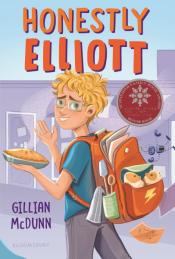
Honestly Elliott by Gillian McDunn
Sometimes finding yourself can be a little messy.
Elliott has been struggling since starting middle school, when his ADHD spiraled and his best friend moved away. He's not too sure where he fits in with his own family, either, especially since his newly remarried dad and stepmom are expecting a baby. Especially when he already feels like his dad just doesn't get him - or his passion for cooking. In the kitchen, it's actually a good thing to have a brain that goes in six different directions at once.
When he's paired with the popular and supersmart Maribel for a school-wide project, Elliott worries they won't see eye to eye. But Maribel is also looking for a way to show others her true self, and this project could be the chance they've both been waiting for.
Sometimes the least likely friends help you see a new side to things... and sometimes you have to make a few mistakes before you figure out what's right.
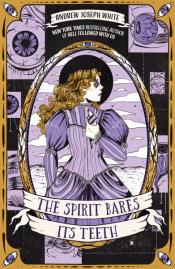
The Spirit Bares Its Teeth by Andrew Joseph White
Mors vincit omnia. Death conquers all.
London, 1883. The Veil between the living and dead has thinned. Violet-eyed mediums commune with spirits under the watchful eye of the Royal Speaker Society, and sixteen-year-old Silas Bell would rather rip out his violet eyes than become an obedient Speaker wife. According to Mother, he’ll be married by the end of the year. It doesn’t matter that he’s needed a decade of tutors to hide his autism; that he practices surgery on slaughtered pigs; that he is a boy, not the girl the world insists on seeing.
After a failed attempt to escape an arranged marriage, Silas is diagnosed with Veil sickness—a mysterious disease sending violet-eyed women into madness—and shipped away to Braxton’s Sanitorium and Finishing School. The facility is cold, the instructors merciless, and the students either bloom into eligible wives or disappear. So when the ghosts of missing students start begging Silas for help, he decides to reach into Braxton’s innards and expose its rotten guts to the world—as long as the school doesn’t break him first.

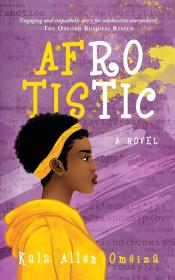
Afrotistic by Kala Allen Omeiza
Noa Ohunene Jenkins doesn't feel Black enough. Or autistic enough. Or cool enough.
In her new town, the fifteen-year-old strives to make Dean's Merit Society, an elite honor society that she sees as her ticket to success. To make the society, she needs leadership experience, but there's one problem: Noa struggles to socialize appropriately.
Desperate to make it in the society, she creates her own group consisting of autistic students from her school district and names it the "Roaring Pebbles".
With the assistance of the Roaring Pebbles, a robot toy invention, her nonspeaking brother, and a bit of classical Mozart along the way, Noa clings to her chance to make the society. And to one day, finally feel enough.

On the Edge of Gone by Corinne Duyvis
January 29, 2035.
That’s the day the comet is scheduled to hit—the big one. Denise and her mother and sister, Iris, have been assigned to a temporary shelter near their hometown of Amsterdam to wait out the blast, but Iris is nowhere to be found, and at the rate, Denise’s drug-addicted mother is going, they’ll never reach the shelter in time.
Then a last-minute encounter leads them to something better than a temporary shelter: a generation ship that’s scheduled to leave Earth behind and colonize new worlds after the comet hits. But each passenger must have a practical skill to contribute. Denise is autistic and fears that she’ll never be allowed to stay. Can she obtain a spot before the ship takes flight? What about her mother and sister?
When the future of the human race is at stake, whose lives matter most?
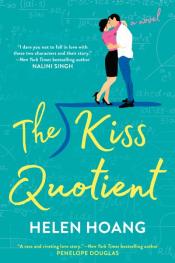
The Kiss Quotient by Helen Hoang
A heartwarming and refreshing debut novel that proves one thing: there's not enough data in the world to predict what will make your heart tick.
Stella Lane thinks math is the only thing that unites the universe. She comes up with algorithms to predict customer purchases—a job that has given her more money than she knows what to do with, and way less experience in the dating department than the average thirty-year-old.
It doesn't help that Stella has Asperger's and French kissing reminds her of a shark getting its teeth cleaned by pilot fish. Her conclusion: she needs lots of practice—with a professional. Which is why she hires an escort, Michael Phan. The Vietnamese and Swedish stunner can't afford to turn down Stella's offer and agrees to help her check off all the boxes on her lesson plan—from foreplay to more-than-missionary position...
Before long, Stella not only learns to appreciate his kisses, but to crave all the other things he's making her feel. Soon, their no-nonsense partnership starts making a strange kind of sense. And the pattern that emerges will convince Stella that love is the best kind of logic...